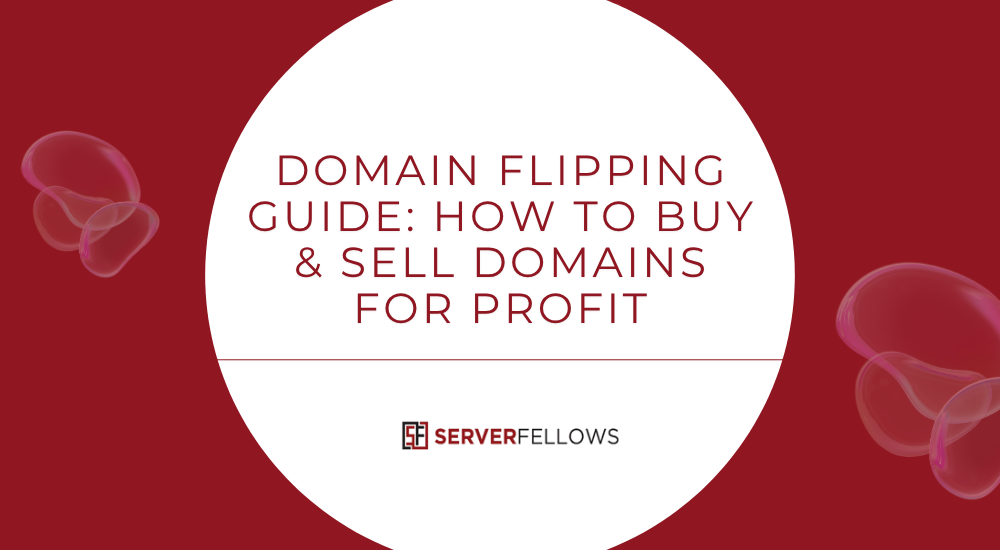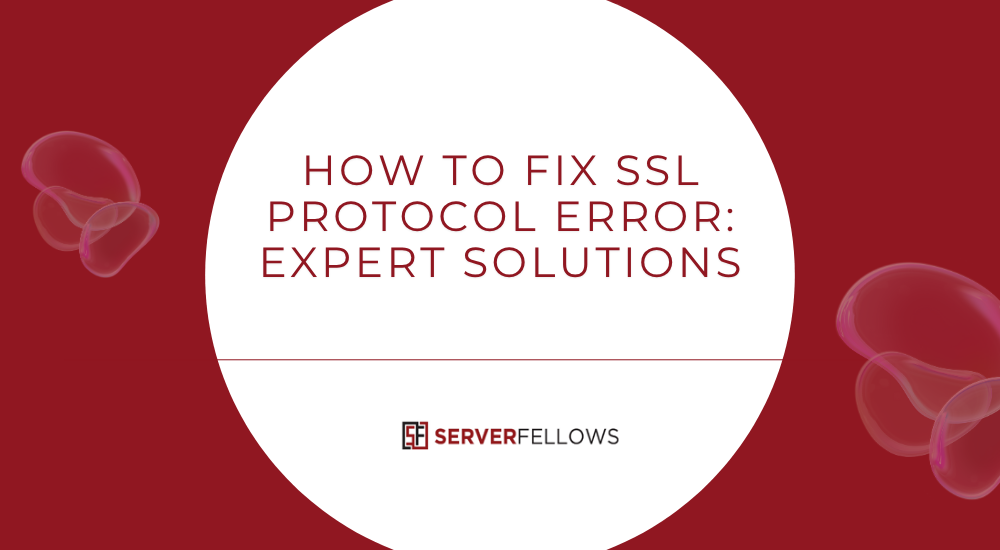
What is Domain Flipping? The Complete Guide to Buying and Selling Domains for Profit
If you’re curious what is domain flipping, think of it as trading digital real estate: you acquire underpriced, brandable web addresses and resell them to buyers who value those names more than the registration cost. The right names can sell in days, while others appreciate over months. With disciplined research, smart selection, and clear selling systems, this can become a lean, scalable side business—or a focused venture—without inventory, shipping, or complicated overheads.
A One-Minute Answer: What is Domain Flipping?
What is domain flipping in practical terms? It’s the process of:
- Sourcing: Finding undervalued domains through hand-registration, auctions, closeouts, or expired lists.
- Evaluating: Scoring names for brandability, relevance, legal safety, and resale potential.
- Positioning: Creating for-sale landers, listing across marketplaces, and setting a buy-now (BIN) or make-offer price.
- Selling: Negotiating with inbound buyers and closing via trusted escrow.
- Reinvesting: Recycling profits into higher-quality names to compound returns.
A helpful early move is to point nameservers to a fast “for sale” page so buyers can contact you instantly. If you need a quick, reliable landing page or lightweight hosting for a tiny portfolio, spin up a simple site with serverfellows.com and connect your domains in minutes.
Why Domain Flipping Works: Scarcity, Signaling, and Timing
To grasp what is domain flipping at a deeper level, consider three fundamentals:
- Scarcity: Each exact domain is unique. Short, memorable names—especially .com—are limited and get competed up.
- Signaling: A strong domain signals credibility, memorability, and direct-type-in potential to customers. That signal is valuable for a brand.
- Timing: New markets, products, and slang appear constantly. Names tied to rising trends can see sharp increases in demand.
Profit emerges when you buy below intrinsic value and sell into stronger demand—often achieved by tracking trend momentum and recognizing evergreen commercial terms. Carrying costs are minimal (mostly renewal fees), so the upside can outweigh the downside if your selection is disciplined.
The Step-by-Step System
A repeatable process answers what is domain flipping in action:
-
Define your strategy
- Brandables: Short, easy-to-say names that evoke a feeling or idea.
- Keywords: Exact-match or partial-match terms with clear commercial intent.
- Hybrid: Two-word brandables combining a core niche word with a clean modifier.
-
Research demand
- Use Google Trends to spot surging topics and seasonality.
- Check keyword tools (e.g., Semrush/Ahrefs) for terms with commercial CPC and advertiser presence.
- Track communities (Twitter/X, Reddit, Product Hunt, niche forums) for emerging jargon and product categories.
-
Build a short-list
- Aim for ≤12 characters where possible, strong TLDs (with .com still king), clear pronunciation, and no hyphens or confusing plurals.
-
Score the candidates
- See “Scoring Criteria” below. Keep a living spreadsheet and note your reasoning, not just numbers.
-
Acquire the domain
- Hand-register if available, or bid in auctions/closeouts. Set a ceiling and avoid emotional bidding wars.
-
Prepare the asset
- Create a for-sale lander with a concise headline, BIN price (optional), and instant contact.
- If you need fast hosting and an SSL-ready landing page, a lightweight plan at serverfellows.com keeps it tidy and quick.
-
List across marketplaces
- Use BIN plus make-offer to capture both impulse buyers and negotiators.
- Syndication networks increase reach.
-
Negotiate and close
- Respond fast, anchor with comps, and use licensed escrow (e.g., Escrow.com, marketplaces with built-in escrow).
-
Measure and refine
- Track impressions, inquiries, CTR, offer rate, sell-through rate, and median sale price. Reinvest into better quality.
Research Methods that Surface Real Demand
To properly answer what is domain flipping without guesswork, focus on demand-led research:
-
Trend scanning:
- Google Trends: Identify rising lines, related queries, and breakout terms.
- Newsletters & industry blogs: Note recurring themes, new categories, and capital flows.
-
Keyword discovery:
- Look for transactional hints (e.g., “software,” “pay,” “studio,” “labs,” “cloud,” “payroll,” “billing,” “legal,” “fund”).
- Combine two- or three-word phrases that sound like a real brand. Test aloud for friction.
-
Marketplaces & auctions:
- Watchlists, bid counts, and “sold” feeds reveal what buyers chase.
- Closeouts and pending-delete windows are fertile for bargains.
-
Expired domain mining:
- Verify history with the Wayback Machine and backlink quality with Majestic or Ahrefs.
- Avoid spammy anchors, PBN footprints, or trademark baggage.
-
Portfolio patterning:
- Study successful sellers. What lengths, word patterns, and verticals keep moving?
Pro tip: Keep an organized spreadsheet (name, TLD, length, niche, history, price paid, notes, comps, status). A clean data trail becomes your competitive edge—and makes it easier to hand off tasks later. If you need quick hosting for your portfolio dashboard or lead capture forms, a minimal site on serverfellows.com is more than enough.
Scoring Criteria: Turn Hunches into Decisions
Use a simple 0–5 rubric per factor, then sum a total:
- TLD quality (with .com preferred)
- Length (≤12 chars favored)
- Pronounceability & clarity (pass the “radio test”)
- Memorability & brandability
- Commercial intent (does the name imply buyers with budgets?)
- Search momentum (trend strength, evergreen vs fad)
- Legal safety (no trademarks or confusing similarity)
- History (clean Wayback profile, non-spam anchors)
- Comps (recent sales in similar formats/verticals)
Set a pass threshold (e.g., 32/50). Document why a domain passed or failed to refine your instincts over time.
Leveraging Expired Domains and Auctions
When newcomers ask what is domain flipping at a higher level, expired assets often feature prominently. Aged domains can bring:
- Faster credibility due to history.
- Existing backlinks (when clean).
- Type-in potential from prior usage.
How to approach:
- Monitor drop lists and pending-delete periods daily.
- Filter by topical match, clean anchors, and realistic end-user appeal.
- Set a maximum bid based on comps and stick to it.
- Diversify sources (e.g., Sedo, Afternic, Dynadot auctions, NameJet, DropCatch).
- Move quickly on crisp two-word brandables and short keyword blends.
After acquisition, point to a for-sale lander immediately. If you prefer a quick setup with your own domain portfolio page, a slim site hosted at serverfellows.com can carry your inventory and inquiry forms without bloat.
Pricing: Appraisals, Comps, and Positioning
Pricing determines how quickly you turn names into cash:
-
Baselines: Use automated appraisals only as a starting signal. Cross-check comparable sales (length, structure, niche, TLD).
-
Two modes:
- Quick-flip: Price near the comp median, keep BIN on, small room for negotiation.
- Premium hold: Anchor at top-quartile comps, accept make-offer, negotiate via data.
-
Signals to adjust:
- Many views + few offers → price may be high or lander unclear.
- Consistent lowball offers → consider a moderate reduction or stronger positioning.
- Seasonality or new product launches in your niche → revisit prices quarterly.
Write a brief one-liner for each listing that conveys value succinctly. Example:
“Concise two-word brand for payroll automation—clear, credible, and easy to remember.”
Where to Sell and How to Track Performance
You don’t need to overcomplicate distribution. To keep what is domain flipping practical:
- List on multiple marketplaces for reach and syndication.
- Use a clean for-sale lander on the root domain (BIN + make-offer).
- Add tracking: UTM tags, unique email aliases, and inquiry forms.
- Measure:
- Impressions and CTR on your landers
- Inquiry rate and offer quality
- Time-to-sale and sell-through rate
- Median sale price per category
A simple spreadsheet or Airtable base is fine. If you want a branded hub for leads and a lightweight CRM page, stand one up at serverfellows.com and forward marketplace messages to a custom inbox (e.g., offers@yourportfolio.com).
Negotiation Tactics that Close Deals
Once buyers arrive, the difference between a “nice lead” and a closed sale is your negotiation craft:
- Speed: Reply within hours. Momentum matters.
- Budget framing: Ask for their range early; it reveals whether you’re close.
- Anchor with comps: Cite similar structures and niches.
- Scarcity & alternatives: Remind buyers that exact matches are unique.
- Frictionless close: Offer a reputable escrow and a clear transfer plan.
- Deadlines: Reasonable time limits keep deals from drifting.
- Tone: Be concise, professional, and friendly.
Legal Safety: Trademarks and Risk Reduction
A cornerstone of what is domain flipping is avoiding legal landmines:
- Search USPTO, WIPO Global Brand Database, and EUIPO before purchase.
- Avoid obvious brand names, confusingly similar variants, typos, and personal names.
- Keep a short note explaining your generic or descriptive intent.
- Use registrar locks and two-factor authentication on all accounts.
Taxes and Simple Bookkeeping
Rules vary by jurisdiction, but most flippers treat profits as business income. Track:
- Cost basis: registration, auction fees, renewal costs.
- Sales data: price, marketplace fee, escrow fee.
- Expenses: tools, hosting for landers (e.g., serverfellows.com), portfolio site, and email.
Set aside tax funds periodically and consult a qualified professional in your region.
Common Mistakes to Avoid
- Overbuying long, awkward names that won’t move.
- Ignoring trademarks and landing in disputes.
- No landers—buyers can’t contact you if the domain shows nothing.
- Pricing without comps—you’ll either leave money on the table or stall sales.
- Chasing fads after they peak; focus on evergreen structures.
- Neglecting follow-ups—many deals close on the second or third touch.
A 30-Day Starter Plan
This roadmap brings what is domain flipping from theory to practice:
Week 1—Research & Setup
- Choose a focus (brandables, keywords, or hybrid).
- Build your scoring sheet.
- Register a small portfolio site for inquiries (a single-page site on serverfellows.com works).
- Study recent sales and note patterns.
Week 2—Acquisition
- Hand-register 3–5 clean two-word brandables.
- Bid on 2–3 promising closeouts; set strict ceilings.
- Point nameservers to for-sale landers the same day.
Week 3—Distribution & Pricing
- Write tight headlines and value blurbs for each name.
- Set BIN for quick-flip candidates; make-offer for premium holds.
- List across at least two marketplaces for reach.
Week 4—Outreach & Optimization
- Answer inquiries fast and negotiate with comps.
- Review performance metrics; refine pricing and lander copy.
- Document lessons and adjust your rubric for next month.
Frequently Asked Questions
Is domain parking still useful?
Yes—if your parking page clearly signals that the name is for sale and provides instant contact. Revenue from ads is a bonus, but clarity for buyers is the main goal.
How many domains should a beginner hold?
Start lean—10 to 20 carefully chosen names. Track outcomes for 90 days before scaling. Quality beats quantity.
How long does it take to sell?
Some names move within days; others take months. Improve your odds with higher-quality names, better landers, BIN pricing, and responsive negotiation.
What escrow methods are safest?
Use licensed services such as Escrow.com or built-in marketplace escrow. Prefer wires for larger deals, confirm transfer steps, and keep written records.
Do I need a separate portfolio site?
It helps. A simple page—logo, short bio, contact form, and featured names—improves trust. Hosting a clean portfolio on serverfellows.com is quick and keeps everything tidy.
Conclusion
By now, what is domain flipping should feel less mysterious and more like a clear, repeatable business. Focus on demand-driven research, a strict scoring rubric, careful acquisitions, crisp landers, multi-channel listings, and data-backed pricing. Negotiate professionally, close through reputable escrow, and reinvest into better names each cycle. With patience and consistency, small wins stack, renewals stay manageable, and standout sales begin to anchor your portfolio’s growth.


